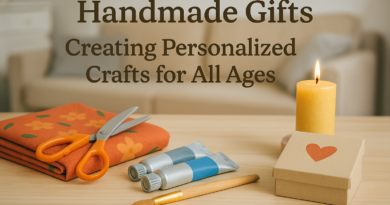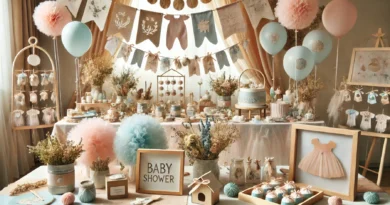Educational Crafts with Recycled Materials: Learning and Playing as a Family
In an increasingly digital world, finding creative and meaningful ways to spend quality time with children can be a challenge. However, a simple, accessible, and beneficial practice has been gaining ground among conscious families: educational crafts with recycled materials. In addition to stimulating children’s creativity and reasoning, this type of activity promotes environmental awareness from an early age — all in a fun and engaging way.
More than just a game, educational crafts with recycled materials are a powerful learning tool. By handling materials that would otherwise be discarded, children develop fine motor skills, mathematical and spatial concepts, and learn about sustainability in practice. The process also encourages socio-emotional development, strengthening emotional bonds when done together with parents or guardians.
Another important point is that this practice does not require significant financial investment. Paper rolls, PET bottles, bottle caps, cardboard boxes, and old newspapers can easily be transformed into toys, games, and decorative items. The important thing is to unleash imagination, using the resources we already have at home to create unique moments of learning and fun as a family.
Educational Benefits of Sustainable Crafts
The first major benefit of educational crafts with recycled materials is the stimulation of creative thinking. By transforming a simple paper roll into a play binocular, for example, the child is invited to imagine new uses and shapes, developing the ability to solve problems in inventive ways.
Furthermore, this type of activity is excellent for developing motor coordination. Cutting, gluing, painting, and assembling are actions that require precision and concentration—fundamental skills for literacy and other stages of school life. And all of this happens in a light and pleasurable way, as part of a family playtime.
From a pedagogical point of view, crafts also offer opportunities to introduce curricular content. For example, by creating a clock with cardboard and bottle caps, it’s possible to teach time in a playful way. Or even, by building a balloon-powered car, introduce basic notions of physics such as movement and air force.
Family Connection and Environmental Awareness
Doing educational crafts with recycled materials is more than teaching — it’s sharing. These creative moments are precious opportunities to strengthen emotional bonds between adults and children. By working together on a project, everyone learns to cooperate, respect different opinions, and value collective effort.
This connection goes beyond family relationships. By discussing the reason for reusing materials, children understand the impact that waste has on the environment and develop a more critical and responsible attitude toward consumption. From an early age, they learn that small actions make a big difference — and this can shape more conscious citizens in the future.
Another important gain is the appreciation of simplicity. Instead of expensive and disposable toys, the child begins to see beauty and value in handmade objects, often created with care during a special moment with their family.
Step-by-Step: Memory Game with Bottle Caps
Here’s a practical and fun suggestion to make at home: a handmade memory game.
Materials:
- 20 PET bottle caps (10 pairs)
- Repeated stickers, matching drawings, or handmade figures
- Hot glue or white glue
- Colored paper (optional)
How to make:
- Separate the caps into pairs. In each pair, glue identical figures inside the caps (two stars, two hearts, two animals, etc.).
- If desired, glue colored paper on the outside of the caps to give a nicer finish.
- Once ready, spread the caps with the pictures facing down and play with the child, trying to find the matching pairs.
Besides being fun, the game works on visual memory, concentration, and logical thinking.
Activity Ideas for Different Ages
Educational crafts with recycled materials can be adapted for different age groups. For young children, simple activities such as collage with colored paper or making musical instruments with cans and rice are excellent. For older children, more complex projects like dioramas or robots made from recycled parts can be great creative challenges.
Other ideas include: creating puppets with old socks, making a piggy bank with milk cans, building a cardboard castle, or creating a mobile with old CDs. The important thing is to adjust the level of difficulty to the child’s interest and ability, always encouraging their active participation.
Tips to Make the Activity Even More Enriching
- Plan together: involve the child from the beginning, allowing them to choose what to create and which materials to use.
- Reuse with purpose: take the opportunity to talk about recycling, conscious consumption, and the environment.
- Value the result: display the works at home or give one of the creations as a gift. This increases the child’s self-esteem.
- Document the experience: take photos, record videos, or write about what was learned. Creating a craft album can be a beautiful side project.
In summary, educational crafts with recycled materials are an intelligent, economical, and emotional way to teach and play at the same time. More than handmade objects, these activities build memories, strengthen values, and leave a positive impact on the world — and in the hearts of children.



